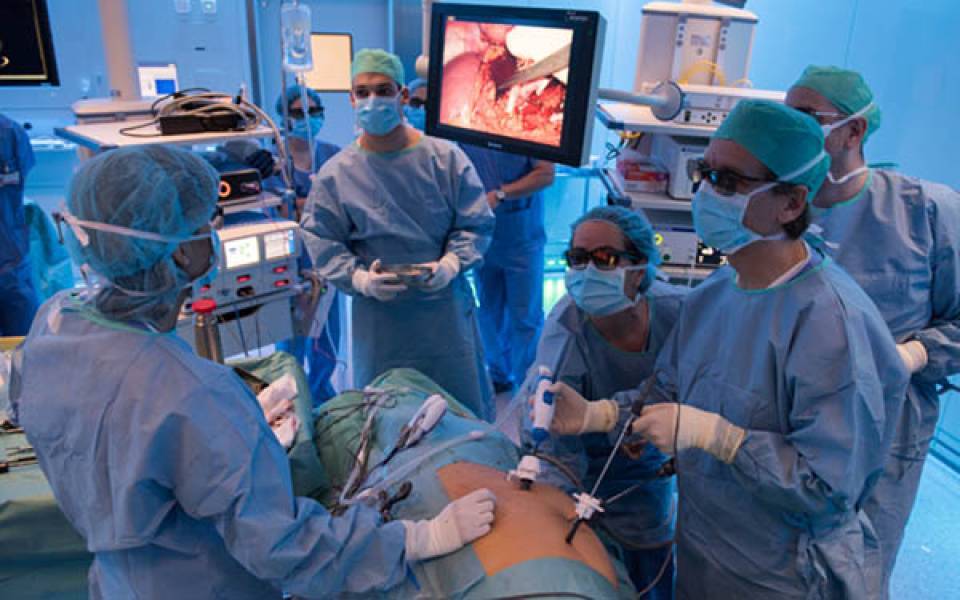In 2016 a total of 55 kidney transplants have been performed in the Hospital Clínic, of which 14 were using this technique. "Our goal is to reach 40% of transplants. Since last summer we have taken a leap forward and we want to carry on this path", says Dr. Antonio Alcaraz, Chief of Urology in Hospital Clínic. Dr. Alcaraz also indicates that "This surgery is our chosen technique for kidney transplants from living donors. We go to open surgery when surgical difficulties are expected ".
The team led by Dr. Alcaraz is the reference group for the introduction of this technique in Europe because of being pioneer and because of the number of transplants performed. "Thanks to the commitment of the whole team we could place the Clinic in the kidney transplant forefront of Europe or even the World", says the surgeon.
The adoption of minimally invasive techniques for the donor and the recipient, enables reduction of open surgery, reduces the risk of complications and promotes the patient quick recovery. Robot surgery is performed through four small incisions in the patient's abdomen to place the arms of the machine. The organ is inserted or removed through the vagina in women’s case or through an incision of 6cm. in the navel in men’s case.
In August 2015, a team led by Dr. Antonio Alcaraz, extracted two kidneys by transvaginal nephrectomy, that is, through the donor's vagina, and they implanted it in the recipient by robotic surgery, using the robot Da Vinci Xi.
The incorporation of robotics in kidney transplantation is a breakthrough, according to Dr. Alcaraz opinion because "we were not able to use laparoscopy because the instruments didn’t allow us to maneuver properly. With the Da Vinci Xi we can get more movement than with a human wrist and we can move it with high accuracy because every gesture is reproduced on a scale of 1 to 10. This means we can get a minimum displacement with a natural movement".
The technique to perform a complete kidney transplantation with robotic surgery is complex but it is totally standardized. In India, the country where it has been developed, they have performed more than 400 kidney transplants of this type. "This is a paradigm shift in the performance of such operations", says Dr. Alcaraz. "The minimally invasive techniques, which were already applied in other surgeries, now reach the kidney transplant", he adds.
Xi Da Vinci Robot
The Da Vinci Xi surgical robot is a high-tech equipment that opens the door to operations of different specialties thanks to a minimally invasive approach and more accurately than conventional laparoscopy. In the near future it will also allow performing operations, in an optimized way, through a single hole thanks to Single Port technology (SP).

